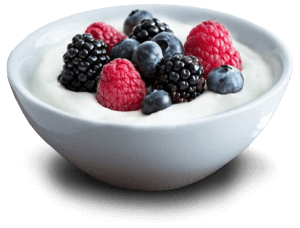The promise almost seems too good to be true: If I put in the work and push myself during a workout, then I could keep burning calories for hours after it's done? That means that after my Saturday morning sweat session, my body stays in fat-burning mode while I head out to a boozy brunch or kick back on the couch with some Netflix and a snack? Sign me up.
Known as the afterburn effect, this process is said to rev up your metabolism, helping your body burn calories for hours after you exercise. It's a theory many High Intensity Interval Training gyms and personal trainers tout as one of the biggest benefits of their grueling workouts—promising you'll reap the rewards of their one-hour session until the next day. But are these benefits too good to be true?
The theory makes sense on the surface. Like after revving up a car's engine it stays warm for a while, right? But the science is a bit more varied. And like anything associated with health or losing weight, it seems like there's a fair amount of hyperbole built into the hype. In fact, a growing body of evidence suggests that the afterburn effect, while beneficial, might not be as effective as once thought for burning fat.

The medical term for the afterburn effect is "excess post-exercise oxygen consumption" (or simply EPOC). This refers to the oxygen your body requires in order to replenish your body's fuel stores, balance hormones, restore blood oxygen levels and repair the muscle and tissue fibers. And your body utilizes oxygen to produce fuel needed for your muscles to fire up during exercise, but it can also call on stored energy sources that don't require extra oxygen. The harder you exercise, the greater your EPOC will be, and the more total calories you'll burn overall.
According to the American Council on Exercise, EPOC is influenced by the intensity, not the duration of exercise. Which is why short bursts of intense, taxing exercise like a HIIT workout and resistance training burn more total calories than sustained cardio like running or cycling. Simply put, they result in a greater EPOC. Great news for me. I hate jogging but don't mind putting in a few reps working my vanity muscles by the weight rack.
Sure, it's not a huge gain, but it certainly adds up over a week or month's time. And Keating says that there are benefits beyond calorie burn as well. During intense workouts, your body produces more human growth hormone (HGH) and the good form of adrenaline—both of which come with fat-burning capabilities. In fact, an NIH study found that a 30-second sprint on the stationary bike resulted in a nearly 450 percent spike in HGH production, which not only boosts metabolism but also helps build muscle and repair everything from organs to brain tissue. In other words, the afterburn is real and definitely has benefits. Does it mean I can workout once and coast all week? No. But does it motivate me to work hard in the gym so I can get the most from the post-workout burn? You bet.

Want a Bigger Boost?
Make sure to eat breakfast before your morning workout. Research found that eating a small meal before early morning exercise sessions elevated both metabolism and fat utilization for 24 hours afterwards.